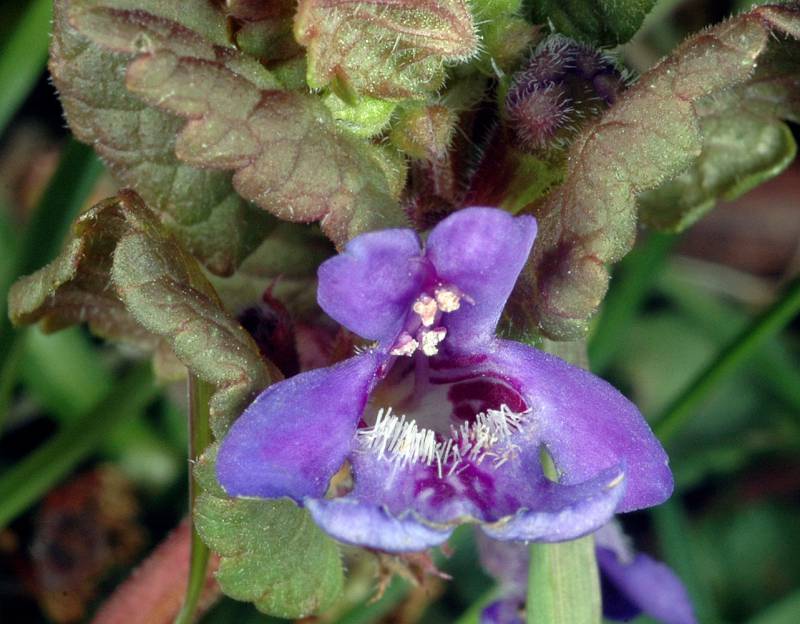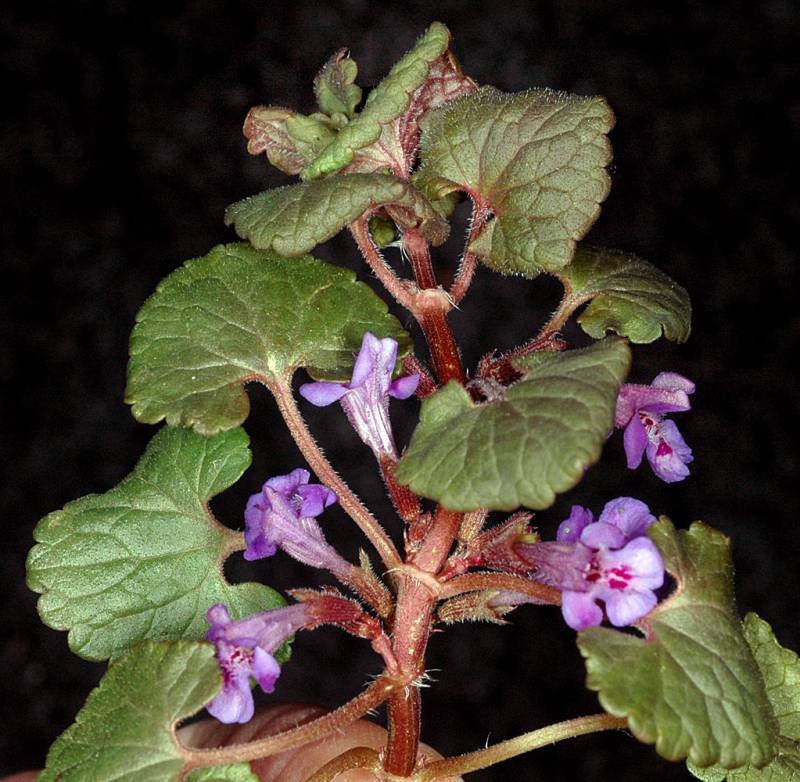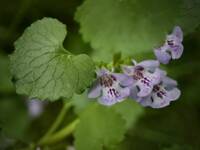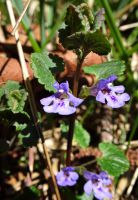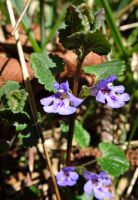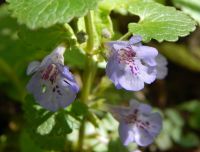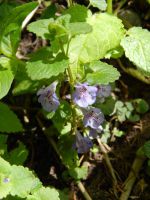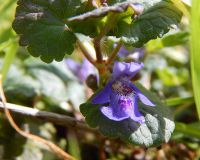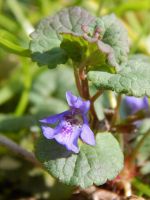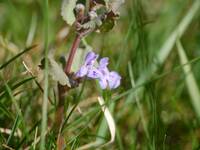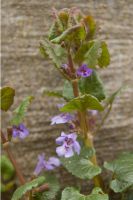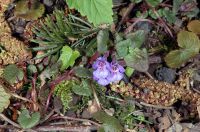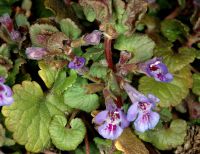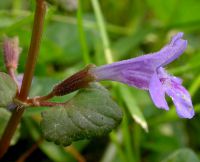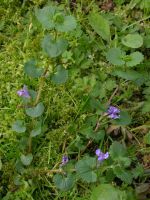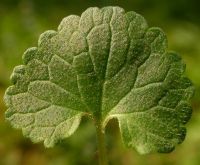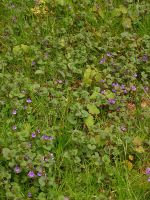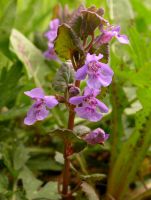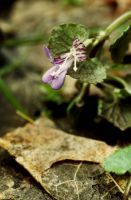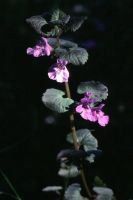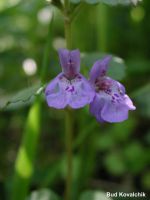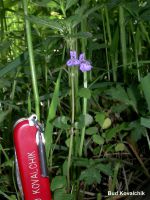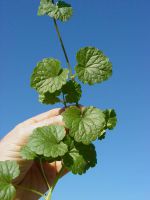Distribution: Occurring chiefly west of the Cascades crest in Washington; British Columbia to California, east across much of North America to the Atlantic Coast.
Habitat: Moist woods and thickets, disturbed areas.
Flowers: April-June
Origin: Introduced from Eurasia
Growth Duration: Perennial
Conservation Status: Not of concern
Pollination: Bumblebees, bees, butterflies, flies
Fibrous-rooted perennial herb with slender stolons, the stem lax, 1-4 dm. tall, scabrous to nearly glabrous, with long, soft hairs at the nodes.
Leaves opposite, cauline, all alike, petiolate, the blades glabrous or stiff-hairy, rotund-cordate to cordate-reniform, with rounded teeth, 1-3 cm. long.
Flowers in few-flowered verticels in the leaf axils, with short pedicels; calyx oblique at the mouth, narrow, 5-6 mm. long, 5-toothed, the upper teeth longer; corolla blue-violet with purple spots, 13-23 mm. long, two-lipped, the upper lip 2-lobed, the lower lip spreading with the central lobe much larger than the lateral lobes; stamens 4, the upper pair longer, ascending under the upper lip; style slender, 2-parted; ovary superior, 2-celled.
Fruit of 4 nutlets.
Publication: Sp. Pl. 2: 578. 1753.
PNW Herbaria: Specimen records of Glechoma hederacea in the Consortium of Pacific Northwest Herbaria database
WA Flora Checklist: Glechoma hederacea checklist entry
OregonFlora: Glechoma hederacea information
E-Flora BC: Glechoma hederacea atlas page
CalPhotos: Glechoma hederacea photos

